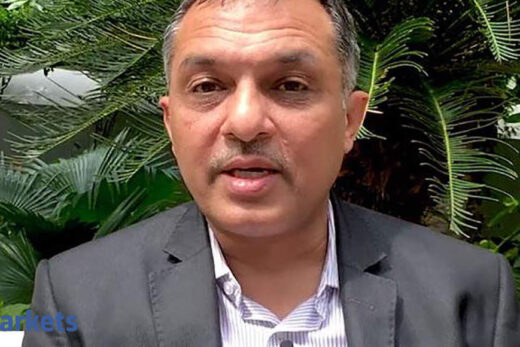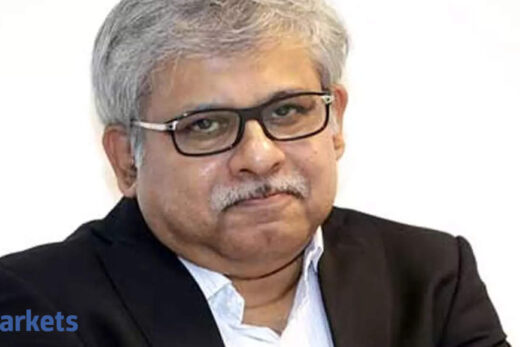Banking stocks are contributing to Nifty gains today. What do you think is lending the market this kind of strength since globally we are not seeing this kind of strength and India is the stark outperformer!
I think we are deriving our strength from the fact that we are probably the country which has shown the greatest improvement in vaccination. In terms of controlling the second wave and muting the third wave, the pace of vaccination and sero prevalence, there is a stark difference because the western world is experiencing the impact of the delta but we are not. There is also the fact that the world markets may not be reacting as well but the world growth story is continuing to have a strong underpinning and India has managed to grab the export pie. Exports have been the surprise winner for India and that has calmed down the foreign investors’ worries about whether the rise in commodity prices would hurt the Indian economy. Exports have improved as we have managed to gain a share from China plus one strategy and that has been helped by the government successfully implementing its PLI scheme.
The export momentum and the PLI momentum means that domestically, there is going to be capex from the private sector. The government’s revenues have been good and they are also not getting up on spending. As a result, the government capex plus private sector announcements of capex gives a strong bullish undertone to all the suppliers through capital goods and that is a great thing.
Finally, these export oriented industries may not necessarily be listed on the stock market but the services sector is going to benefit from this export and capex push. There are a lot of reasons for foreign investors to invest in India and at the same time, domestic investors are also investing in stock markets because interest rates are so low. The alternatives to the equity markets are becoming less attractive and so the flows are coming into equity markets with SIPs running into almost Rs 10,000 crore and demat accounts’ rise shows that retail investors are now directly participating in equities, giving it an underlying strength. All of these factors put together is what has given us this bullish undertone to the India story.
Could valuations spoil this party? The PE that we are trading at right now is extremely high and at the same time, India Inc has managed to clean up its balance sheet very well and that could be an added measure.
I do not think so because the market is moving to new dynamics. First, don’t look at trailing PE, look at forward PE; but do not look at forward PE for the current year, look at it for the next year or 2022-2023.
Second, given the sharp fall in our GDP last year and the sharp bounce back, it is very important to look at it as valuation story like a PE growth or the PEG ratio, which when plugged in the expected growth of high single digit for the following year, make those valuations look too reasonable.
The third aspect is that a lot of IPOs coming into the market are from new sectors where historic valuation models do not apply. So, the market is discovering new valuation dynamics and that is where the story lies. Last and finally, the existing earnings expectations of analysts has all been beaten by the companies and so unless they are lagging in terms of projecting the future earnings growth, that positive thing has given us further impetus to the fact that do not look at current valuations in terms of trailing but put your eyes forward in terms of the new dynamic.
Just looking at the return of the laggards and let us start off with the top name ITC I was just discussing with an earlier guess as well as to how while Sanjiv Puri made it very clear as to that the market was not looking at ITC as a conglomerate but just as an ESG sensitive cigarette company and not really recognising its fair value and at the same time you also said that you know ITC is a lot more than the cigarette business it is FMCG as well as hotels as well why do you think all of a sudden markets has recognised the true potential of ITC?
I cannot talk stock specific but this story about ITC is also similar to the story of PSU banks. The flood of liquidity led to the market focussing on growth at any cost. They were just buying growth and soon there was such a disparity between typical value oriented companies and growth companies, that value made imminent sense. Then companies like ITC and PSU banks started benefiting from the fact that they lost liquidity so much in the initially rally, that the relative difference now makes them very good value picks.
The market is now coming back to what we have been already saying, that bulk growth at reasonable prices and not growth at any cost. That is how the market dynamics has changed. The market is now looking if the price being paid is worth it and that is where all of these stocks come into play. You will see that the value pack has now started to catch up with the pure growth pack and all these stocks are benefiting from that kind of a change in thought process.
The other big development is the formation of National Asset Reconstruction Company Limited (NARCL), which was announced by the finance minister yesterday. Do you think this is going to help given that upfront cash payment also has been enabled for providing incremental cash flows and enabled banks perhaps to focus more on core operations?
There is a larger story here and I would like to take some time to spend on that. Ever since the pandemic started, bank stocks have been hammered more than the rest of the market because of the fear in terms of what is going to happen to that portfolio. All the banks have been providing in anticipation of bad loans and discovering now that those provisions are far in excess of the actual number.
Since you have a bullish stance on banks, within the space how would you pick and choose?
There is governance, there is capitalisation and there is quality in terms of portfolio book. So in the case of governance, we would prefer the well owned, widely disbursed banks. In terms of corporate governance, the past track record is very critical in terms of how they have talked about their provision quarter on quarter, how they have talked about the future and how that has actually turned out. Coming to the quality of the book, it is both on the borrowing side and the lending side.
On the borrowing side, PSU banks have very good CASA and a widespread network of sourcing retail deposits. That gives strength and they are not dependent only on a few large ticket corporates. So that gives strength. But on the lending side, the choice is corporate versus retail. All these days, the focus has been on retail because everybody felt that spreading risk over a large number of loans was better, but as the pandemic came into play, we will see that small retail tickets are the ones which are facing pressure.
In terms of the export push that is happening, in terms of the capex that is the PLI scheme, it is clear that the future is in corporate. There is going to be a tilt in terms of the way they look at the corporate portfolio, especially as the bad bank has also come into picture. The bad bank is going to take care of the toxic corporate book. So banks sitting on a lot of liquidity and a fairly low cost of funding, are going to look at financing a broad range of large, mid and small companies in terms of the capex. The mid and small companies are still paying double digit interest rates in terms of the loans and so the NIMs on these fresh loans are going to look very attractive.
So a bank which has got well positioned for its older corporate bad book and not overly exposed to retail and hence the concern around how the delinquencies are going to be, would be the right kind of a pick. A healthy corporate book going forward will be the key return driver for banks in our perspective and that is where the PSU banks come in. Their strength has been largely in the corporate side and that is one of the reasons that a value based buying in PSU banks has picked up because they are at much lower price to book, have a much better CASA and retail borrowing book. At the same time, they are more corporate oriented in terms of lending.
I think PSU banks will cater to the revival in the Indian economy in a much better way. So I would still put 50-60% of the portfolio in good quality private banks and about 20-30% in the good quality PSU banks and the rest for the top quality NBFCs.
In one of your initial answers you spoke about the liquidity gush and the whole growth at any cost factor that this money was essentially chasing. That brings me to the topic of IPOs from new-age ones like Zomatos, which have never seen a profit on their bottom line. Do you think that Dalal Street’s tolerance towards this would improve or do you think that once the liquidity pauses, this would stop?
Look at the FAANG stocks, the Amazons of the world. They also started on very similar premises. So what happens here is two-three things. First of all, is that in betting on these things, there is a winner takes all approach in the marketplace, but who is going to be that winner is not clear. But the winner is going to walk away with such a huge share of the profit pool that it will more than make up for any losses that you might make elsewhere.
Also, these companies initially were funded by private equity and the venture capital is cashing out when these companies are coming to the stock market. So, if you are buying 10 companies, the fact is that these are survivors but it is not that the others are going to be just loss making. They are going to get bought in and there will be acquisitions and there will be a megalith. Again predicting which is going to be that big winner is tough.
The way to look at this is to limit the component of such IPOs in your portfolio. But definitely have a share, do not go zero on that one. Plus, diversify across as many of these new-age players as possible so that one or two winners are there in your portfolio which will more than compensate for whatever the rest do. Approaching this in that manner, diversification of the portfolio will help. Discounted cash flow, projected earnings are not going to help at all. The right way to look at this is going by the track record of the western world, these stocks could turn out to be multibaggers in the future. So play that, but with a diversified pick across all of these kinds of plays so that the winner will be in your portfolio ultimately.
I was looking at some of the top sectors that Sundaram Mutual Fund owns across its different funds. IT is at the bottom of the pack. Is this on account of any conscious decision that IT has run up quite a bit?
We remain bullish on IT but we have shifted focus to more midcap and smaller cap IT stocks because we believe that there the valuations have still not caught on to the growth potential. We thind IT has gone through a Y2K kind of reset post the pandemic and the future is very bright. So if you are seeing any kind of a lower share for IT, it is only because the biggies’ values have gone up so much that we have just reallocated to the next gen winners, the emerging IT blue chips. That is why we have shifted focus. We continue to remain bullish on IT as a pack, no doubt on that.
The proportion in the portfolio might come down because our other picks in the immediate short run are moving to a more domestic economy sensitive portfolio could mean that they have gone up and our picks have been good and so they have appreciated more. Fundamentally, we have not gone and sold any IT stocks, it is just that the appreciation of the rest of the pack has made that the IT percentage is where it is. I would argue that our IT outlook remains positive and we are much more broad-based in terms of our IT exposure across large, mid and small.



